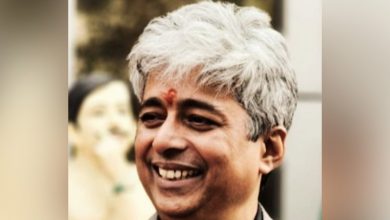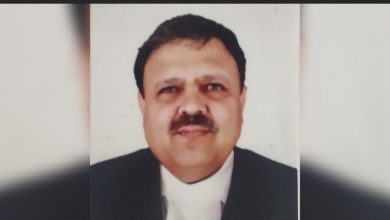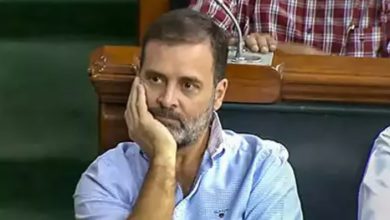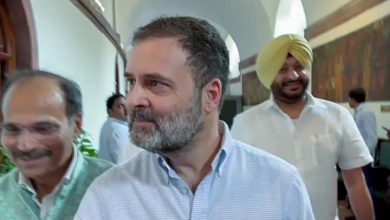
On Thursday, Kerala’s Kannur traveled to Delhi University. Hoardings with photographs of BJP and RSS activists killed or maimed allegedly by CPM activists dotted North campus. Without a doubt, they were disturbing pictures but the intention was precisely that. To show that Kannur was the Wild West of Kerala. The occasion was the ABVP march to protest against it being blamed for the violence in Ramjas college last week and what it calls the anti-national utterances by Leftist groups.
On Friday, Kerala will be in Hyderabad where a mass protest has been organised against the “CPM-sponsored violence on nationalists in Kerala”. It is obvious that the BJP has found in the nearly five decade old political violence of Kannur, an opportunity to hit several birds with one stone.
The beginning has already been made on social media. Given that universities, the new akhadas of confrontation, have largely been a right wing versus Left battle — be it at JNU, Delhi University or Hyderabad Central University, any voice that is perceived as pro-Left is greeted with the “What about Kannur?” rhetorical question. The bloodied land of Malabar, the BJP reckons, can be showcased to establish that the party and its affiliate organisations are under attack.
Bringing Kerala to Delhi has worked in terms of shock value, especially with people outside the southern state largely ignorant about the realities on the ground and the history of political killings. A few years ago, I remember a news editor in Delhi asking me if Kannur, Coonoor and Kurnool are indeed different places and wondered why south Indians gave similar sounding names to their towns!
How does making India aware about Kannur help the BJP? On the face of it, it would seem strange for the BJP to give so much important to the Left, given it is a political force on the decline, with no presence beyond Kerala, Bengal and Tripura.
Representational image. FirstpostRepresentational image. Firstpost
One, the right-wing is looking at the youth, the gen-next voters in the universities. It gives the ABVP an opening to make its template more acceptable to the younger crowd. To take on the more liberal way of thinking of the Left, the ABVP wants to push its brand of nationalism as an alternative. Where the dos and don’ts are clearly defined and wrapped in the tricolour, with the armed forces as a shield. It is this idea of India that the right wing wants to convey, is being targeted brutally by the Left in Kerala.
Two, it helps make inroads into the opposition space in Kerala at a time when the Congress is in comatose state after its defeat in the assembly polls last May. The BJP admittedly has a long way to go from the lone MLA it has in the Kerala assembly now but it would hope that projecting itself as the victim and the Reds as the aggressor, would help politically.
In April last year, when I was touring Kannur, a top cop in the district told me how when a CPM activist gets killed, only the state media picks up the news. But when a BJP activist is the victim, it invariably becomes a national issue because the saffron party projects as if only it is being targeted.
The facts on the ground are very different. It has been a scoreboard culture since 1968 when the first killing — that of a RSS activist V Ramakrishnan — took place. Over the years, without fail, a killing on one side is avenged within hours with a killing on the other side of the political divide. The CPM versus RSS rivalry in Kannur has seen over 250 people being killed and several hundreds maimed for life, since the late 1960s.
Professor T Sasidharan, who teaches political science at Kannur’s Sree Narayana College has researched extensively on the political violence in the district and says the conflict arises out of Kannur being a CPM stronghold and the RSS attempt to capture it. Senseless as the murders may sound, for the party-worshipping brainwashed cadre of both outfits, revenge killings are seen as adding sheen to an activist’s CV.
BJP Kerala general secretary K Surendran alluded to it while addressing a BJP function in Mangalore last week, pointing out that his party has retaliated to every murder of its workers by the CPM in Kerala. The right wing protest against Vijayan’s visit to Mangalore was an attempt to broaden the geographical sweep of its political battle against the Left.
As if on cue, emerged the video of Madhya Pradesh-based RSS activist Kundan Chandrawat who announced a reward of Rs one crore to anyone who beheaded Kerala chief minister Pinarayi Vijayan. While the RSS distanced itself from Chandrawat’s remark, the BJP leaders from Madhya Pradesh saw it as an expression of the right wing anger and anguish at what was happening in Kerala.
Not that the BJP’s upping the ante has had any effect on the ground. On Thursday night, country bombs were hurled at the RSS office in Nadapuram in Kozhikode district, injuring three activists. The needle of suspicion, as always, points to the CPM.
The political violence in Kannur is not a one-way street and both sides have displayed their worst side in the bloody war. It is not enough for Vijayan to blame the BJP-RSS alone. As chief minister, he is expected to behave like a statesman and get his party to engage in peace talks. But then, the political calculation in Kerala is that a BJP on the ascent will help divide the anti-Left vote. Which is why there is little attempt to ensure no more lives are lost at the altar of selfish politics.
At the RSS office in Thalassery, Sangh member N Suraj showed me the wall on which were mounted photographs of all activists who were hacked to death by CPM. This is the martyrs gallery, which the BJP is now showcasing to portray Vijayan as a murderer. The BJP believes it is targeted more when the LDF comes to power, accusing the police force of being subservient to the CPM leadership.
The CPM pleads innocence, a claim that rings hollow. Since the LDF came to power last year, the Kannur model of revenge politics has been replicated in other districts by both groups. If left unchecked, this will be Kerala’s death knell. By attempting to reap political benefits in the killing fields of Kerala, the leadership of the two political parties have ensured that only they stand to gain by encouraging this dark underbelly of political violence.







